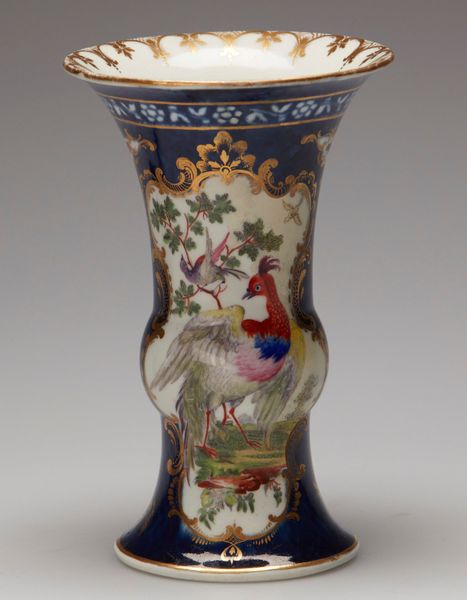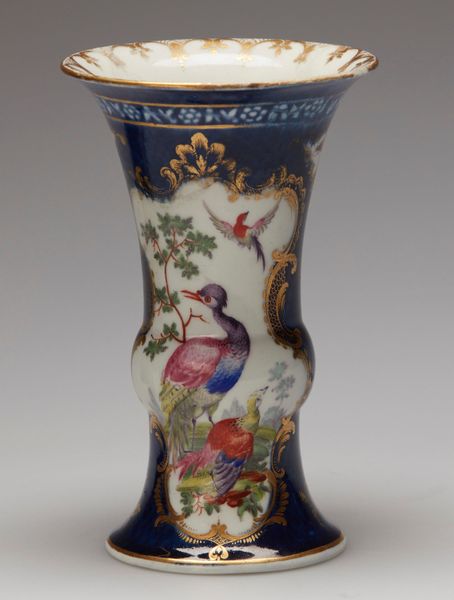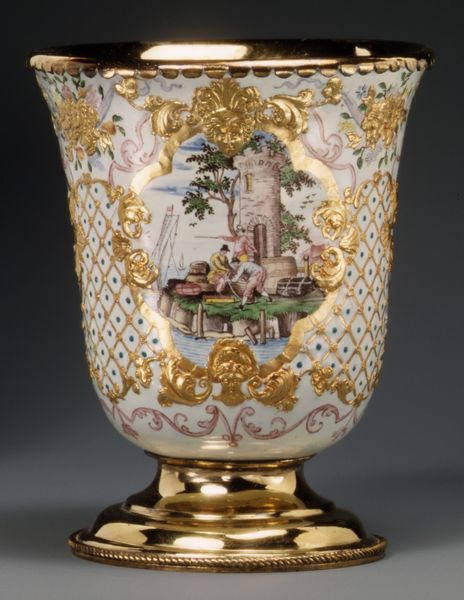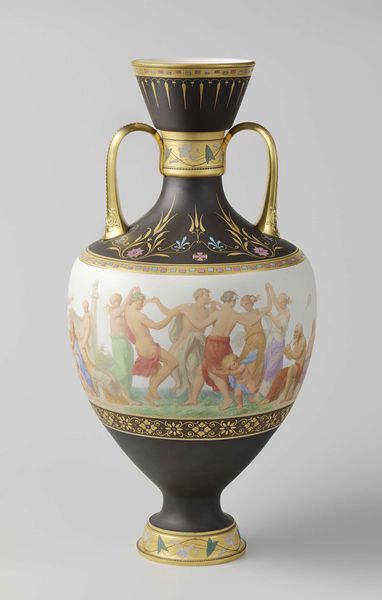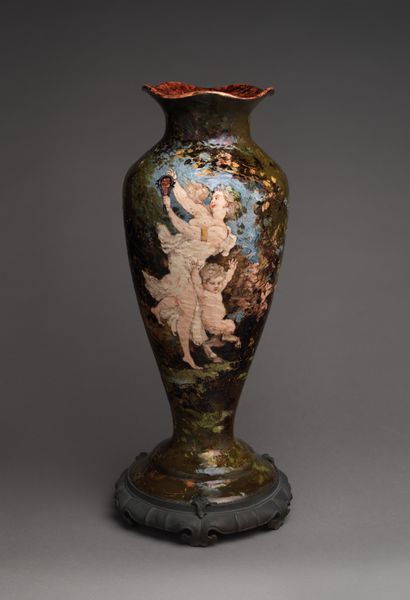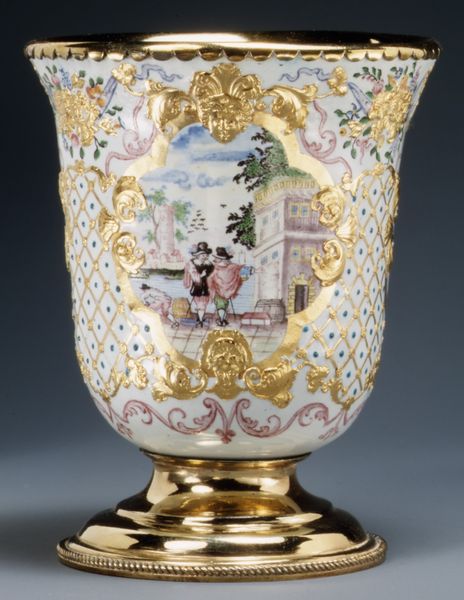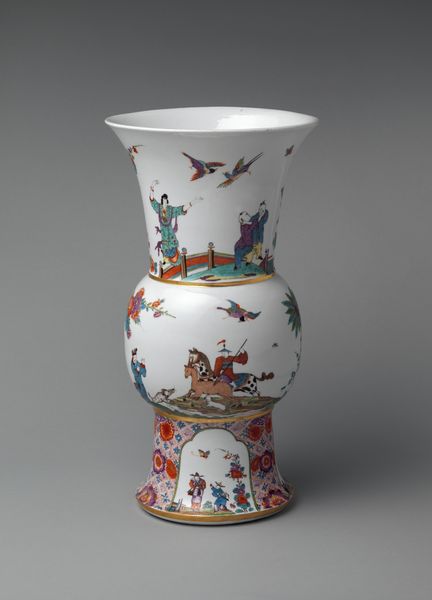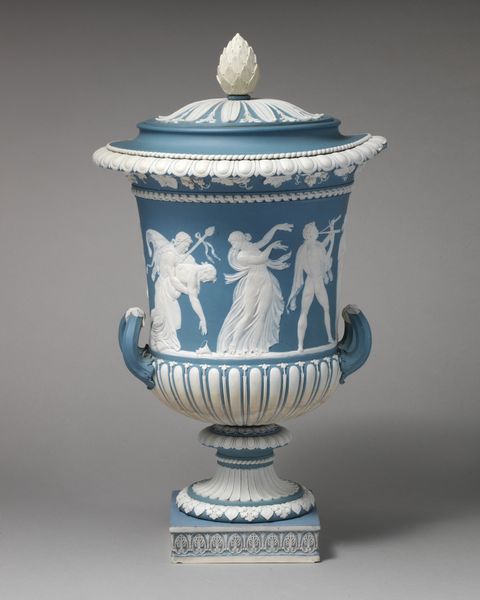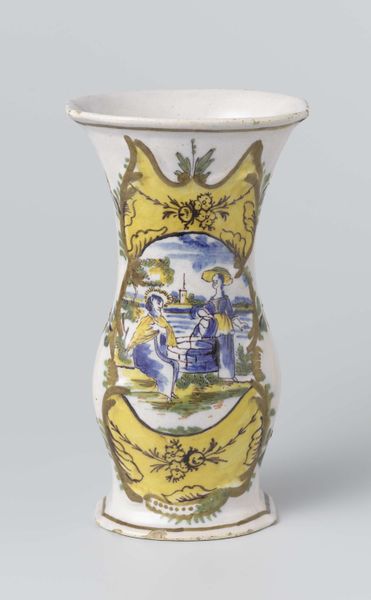
ceramic, porcelain
#
ceramic
#
vase
#
porcelain
#
ceramic
#
history-painting
#
decorative-art
Dimensions: H. 55 cm (21.6 in.)
Copyright: Public Domain
Curator: This stunning vase was crafted between 1859 and 1860 by the Manufacture nationale de Sèvres. Made of porcelain, it represents the height of decorative arts in 19th century France and can now be found at the Art Institute of Chicago. Editor: Wow. Okay, my first impression is...elegant and slightly mournful. It’s giving me a Greco-Roman tragedy vibe. The color palette, the figures...it feels staged, like a scene from a play. Curator: That's an interesting read. Sèvres was heavily invested in reinforcing national pride. History painting, as seen depicted on the vase here, had become extremely fashionable as a symbol of French cultural power during the Second Empire. Editor: History painting, huh? To be honest, it reminds me more of one of those melancholy Jacques Louis David paintings – only transferred onto a curvy vase. I guess someone thought tragedy would look nice in the dining room? Curator: Certainly it reflected a vogue for historical styles but, yes, these kinds of items served as both diplomatic gifts, display of power and artistry as they were made for Europe's elite and aristocracy. Imagine how these objects helped forge alliances and project cultural superiority! Editor: So, a high-end power move. The gilt handles and elaborate details definitely scream "expensive taste." Do you think the choice of subject matter was simply about looking serious, or did they want to stir some kind of emotion with their table settings? Curator: It was strategic. By showcasing scenes rooted in antiquity or national mythology, these items linked their patrons to a rich and glorified past and of course the technical accomplishment required to fire something of this scale and design testified to France's technical mastery. Editor: Okay, power move. Technical mastery. Still… all I see is drama waiting to happen at teatime. But now that you say it, its high art history served on delicate porcelain is kind of provocative. Curator: Exactly! Art objects like these demonstrate the complex interplay between aesthetic enjoyment and cultural meaning. Editor: And the ability to buy influence! Thanks, it’s nice to appreciate that historical context changes everything – even the mood of a vase! Curator: Indeed, understanding these nuances allows us a greater grasp on what the producers wanted to achieve beyond aesthetic pleasantness, to affect the status of patrons as well.
Comments
No comments
Be the first to comment and join the conversation on the ultimate creative platform.
